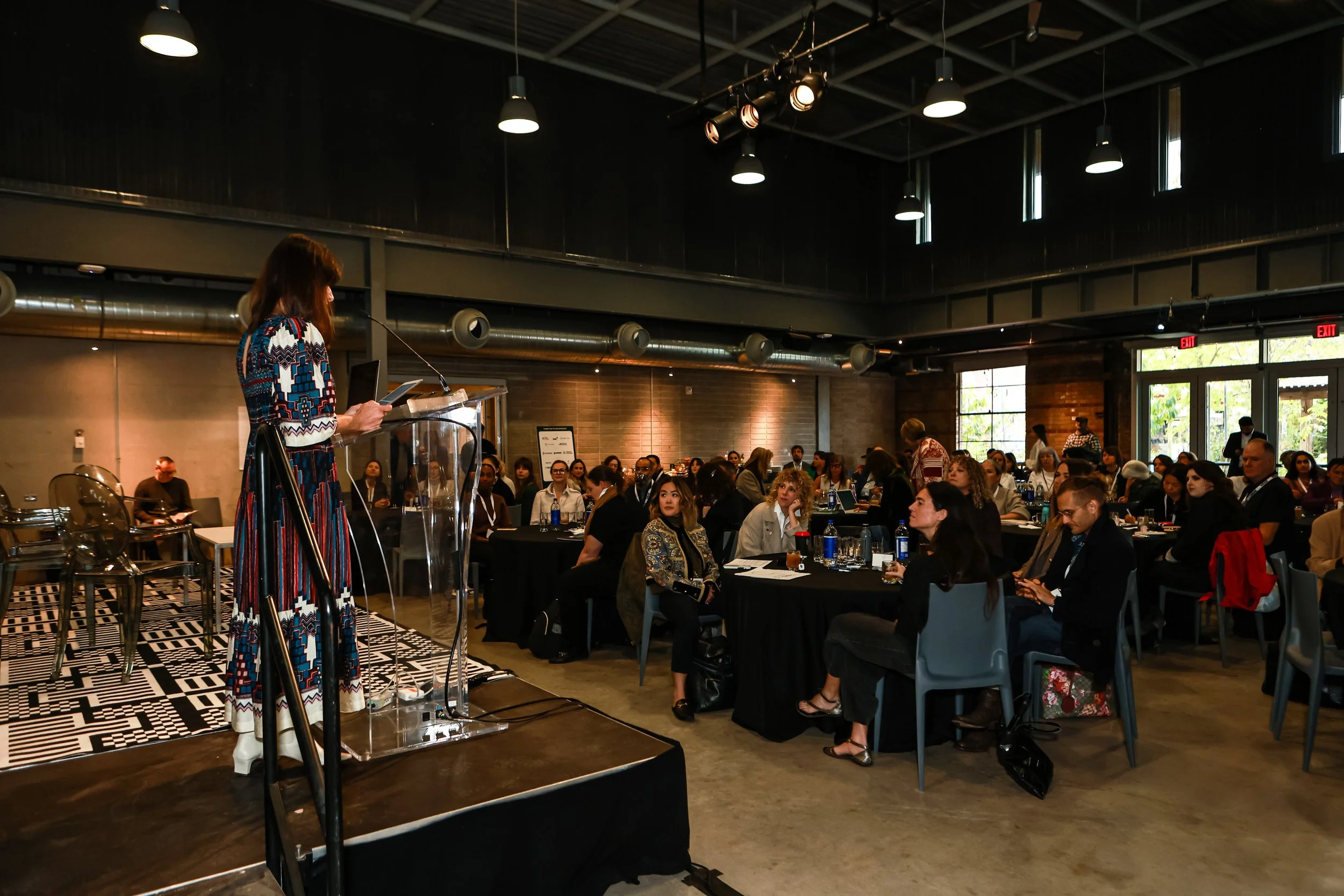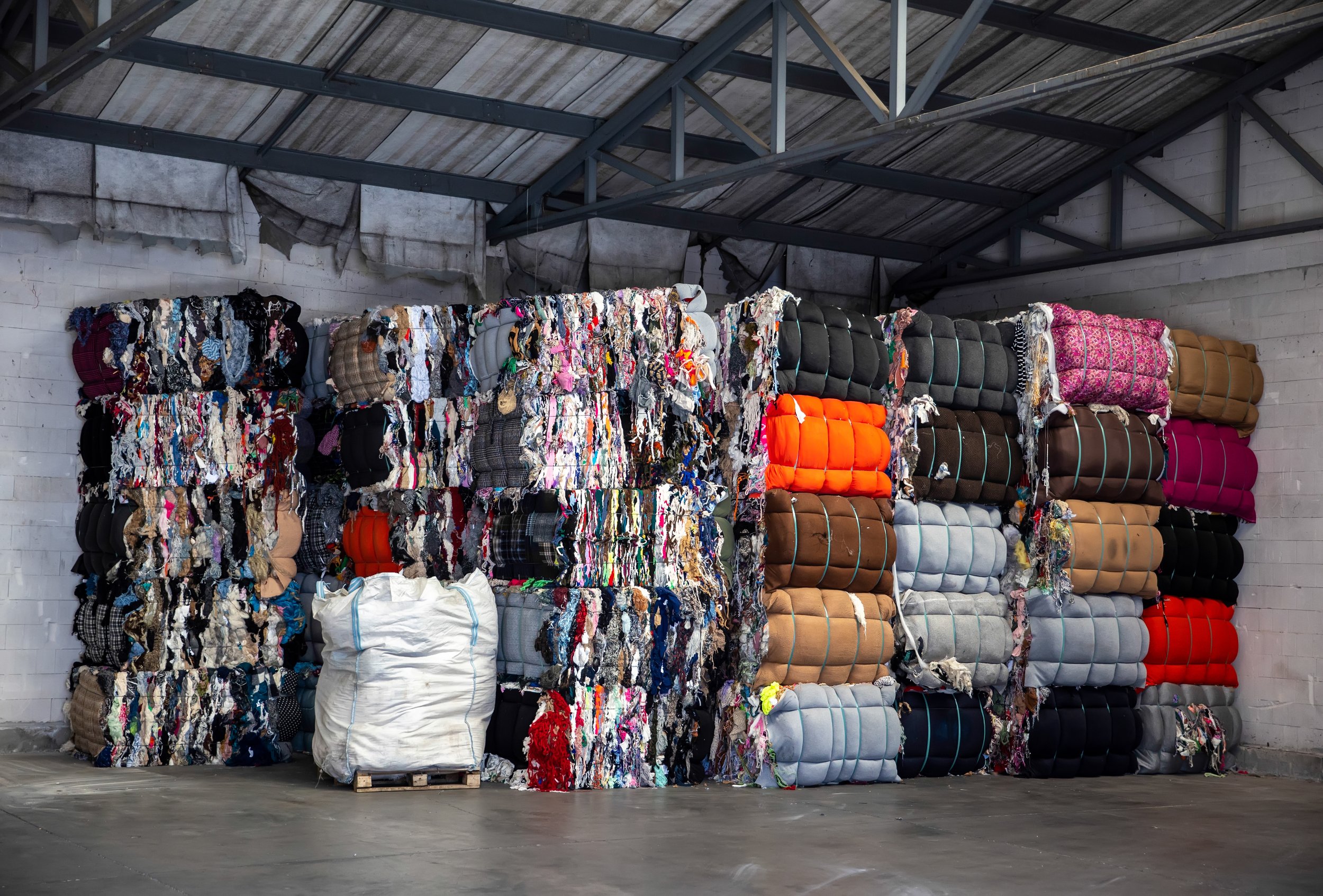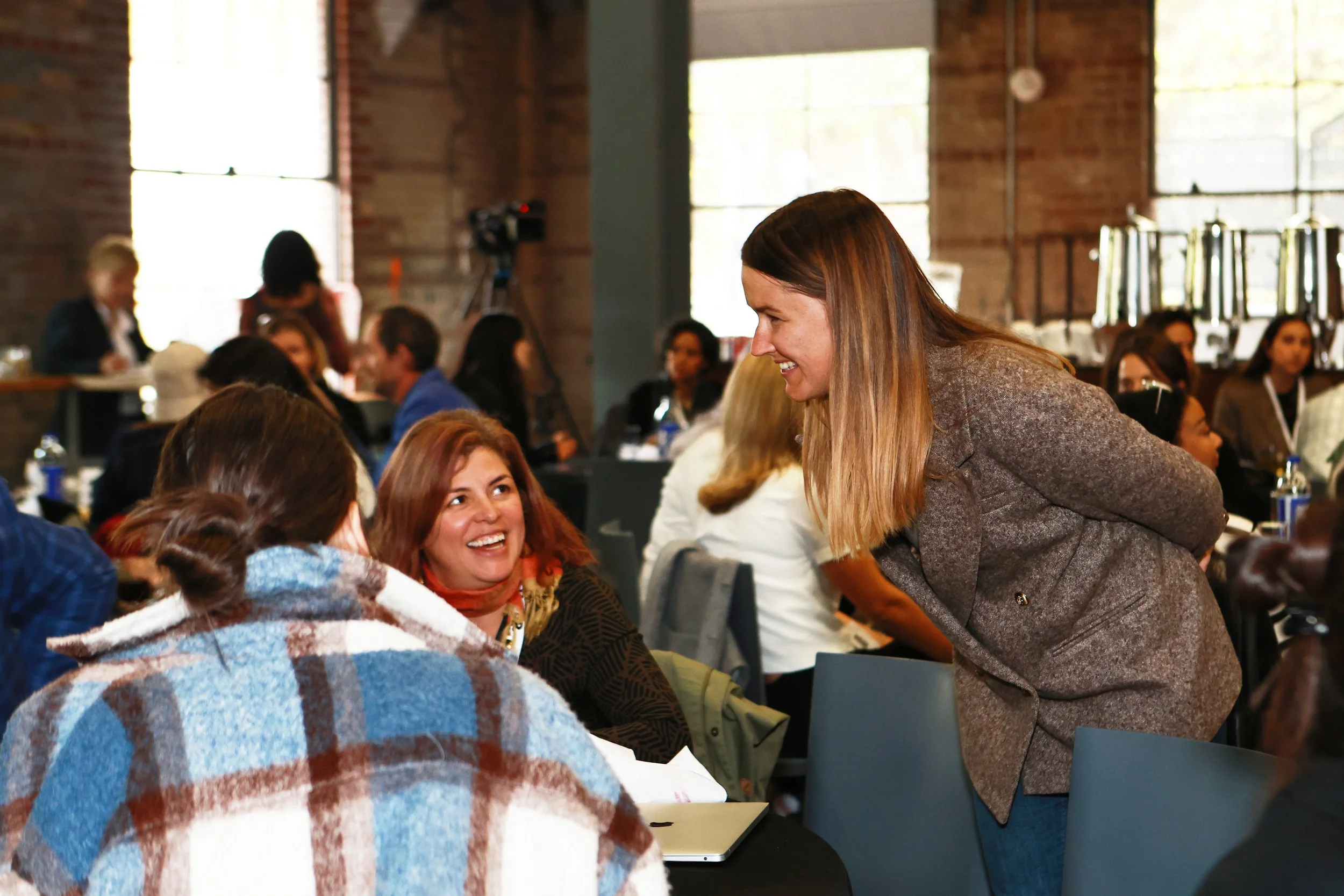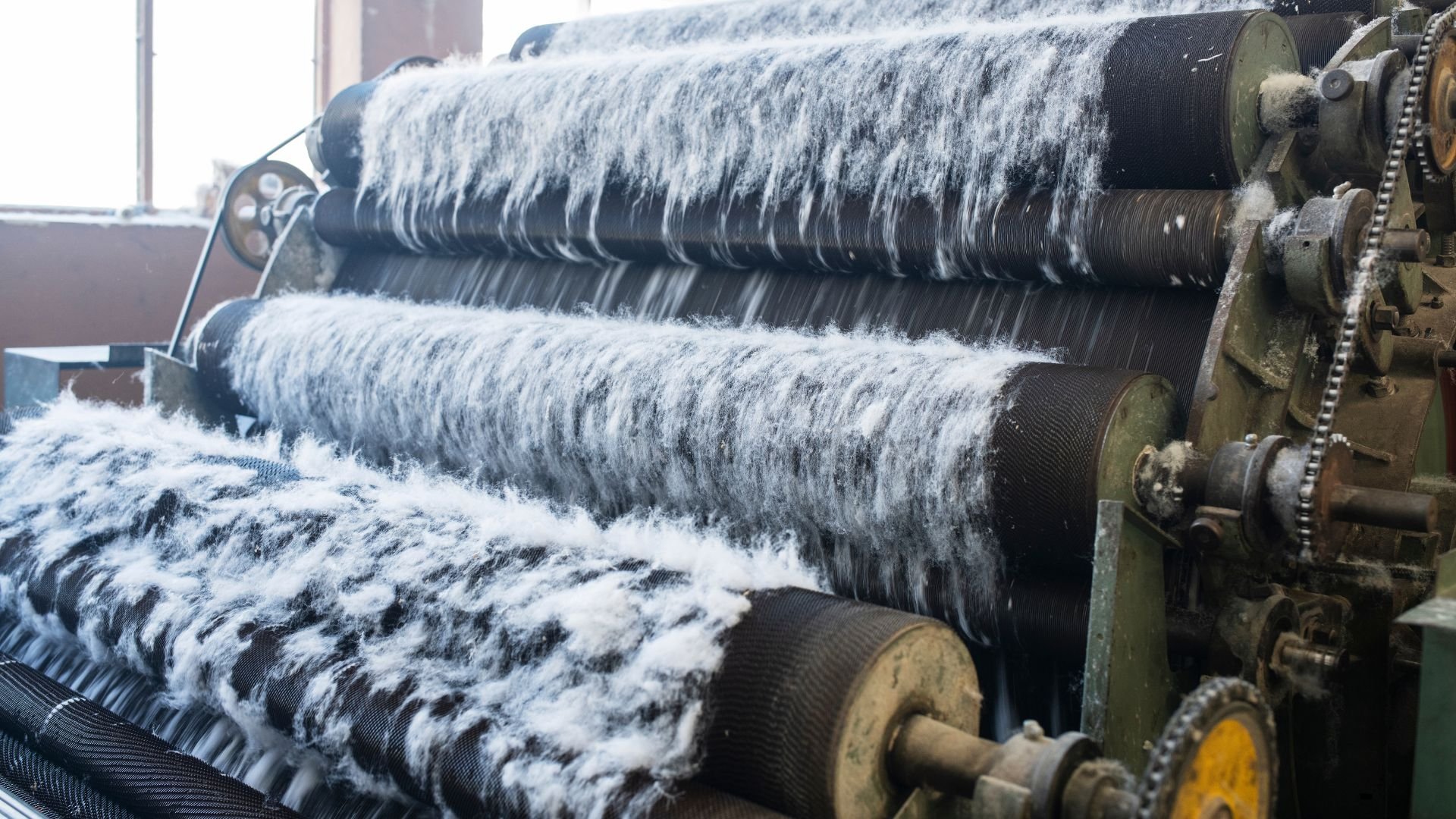
Canadian Circular Textiles Consortium
Leading the Circular Textiles Revolution

Building partnerships. Driving solutions. Closing the loop.
What is the CCTC?
The Canadian Circular Textiles Consortium (CCTC) is a national initiative that unites brands and retailers, policymakers, charities, NGOs, academia, and innovators to advance circularity in textiles across Canada.
Vision: An integrated, circular system that eliminates global textile waste and advances the transition to a regenerative economy.
By aligning efforts and sharing knowledge, the CCTC works to develop scalable solutions for textile waste, close material loops, and build a sustainable and circular future.
Intended Impact: CCTC will enable a circular textiles system by optimizing resource use across the textile value chain in Canada.
Key Objectives:
Reduce the volume of textiles in landfill through improved recovery and recycling systems.
Support the growth of circular business models, such as resale, rental, and repair.
Influence policy development to drive systemic change.
Futures Framework: Our Roadmap
The Futures Framework is CCTC’s strategic roadmap to accelerate Canada’s transition to a circular textiles economy. Developed through extensive multi-stakeholder engagement, the Framework identifies 12 interconnected action areas critical for system-wide transformation:
-

Circular Business Models
-

Circular Design
-

Policy Drivers
-

Citizen Awareness
-

Infrastructure Pathways
-

Industry Education
-

Green Procurement
-

Made in Canada
-

Impact Measurement & Traceability
-

Financial Incentives
In the first phase, each action area is being explored through in-depth interviews, generating a series of “What We Heard” reports. These findings will inform a national Needs Assessment that synthesizes insights across all 10 areas; highlighting shared gaps, system enablers, and strategic priorities for investment, collaboration, and policy development.
The final phase will culminate in a Circular Textiles Playbook: a practical, action-oriented guide to equip brands, governments, and other stakeholders with the tools and strategies needed to implement circular solutions tailored to the Canadian context.
By mapping capabilities, highlighting system leverage points, and aligning with global best practices, the Futures Framework offers a clear and credible pathway from insight to action.
The Framework also informs a growing portfolio of CCTC-led and partner-supported projects. See below!

What We’re Working On
-
Developed in collaboration with Deloitte, our Circular Business Models (CBM) initiative provides a strategic framework for businesses to adopt and scale circular practices. By analyzing the current landscape, the report identifies key capabilities, operational gaps, and opportunities for improvement to support the transition to a sustainable circular economy.
Through industry engagement, expert interviews, and heat mapping, this project delivers actionable insights to help businesses implement circular strategies effectively. The final deliverable—a CBM Value Chain Capability Map report—will outline recommendations and next steps for industry adoption.
-
This project aims to provide both strategic guidance and practical tools to help Canadian brands, designers, and manufacturers, as well as fashion academic institutions, to adopt circular design principles.
This initiative includes two core resources:
Circular Design Toolkit – A practical, hands-on resource adapted and licensed from WRAP International, featuring the 11 principles of circular design. The Toolkit offers templates, checklists, case studies, and decision-making tools tailored for the Canadian market.
Circular Design Guideline – A high-level framework to reflect Canadian realities that will outline best practices, core design principles, and policy-aligned recommendations to strengthen industry alignment and inform regulatory pathways.
Through stakeholder engagement, gap analysis, and expert consultation, this project will ensure the Guideline is both robust and actionable—serving as a critical tool for businesses and governments alike to advance circularity in design.
Together, the Toolkit and Guideline will empower Canadian businesses to implement circular strategies effectively and support the evolution of policy and procurement standards.
-
This project aims to map Canada’s existing textile infrastructure—including secondhand collection, reuse, repair, upcycling, and recycling—and to identify the gaps, barriers, and opportunities needed to build a truly circular system.
A core component of the project is the Secondhand Collection and Diversion Network (SHCDN) Assessment, which gathers insights from charities, collectors, and resale networks to better understand the flow of post-consumer textiles—especially non-rewearable items—and the challenges they face.
Together with national stakeholder interviews and waste audit data, the project will deliver a comprehensive Infrastructure Gap Assessment and Material Flow Analysis (MFA) that will:
Map current infrastructure across Canada (collection depots, sorting hubs, repair facilities, recyclers, and upcycling innovators)
Track secondhand and end-of-life textile flows to resale, recycling, export, landfill, and downcycling
Highlight regional capacity gaps and barriers to scaling reuse and recycling
Inform key policies such as EPR, digital product passports, and green procurement
This work will provide the national data foundation needed to guide strategic investment and systems development for a circular textile economy in Canada.
-
This project is titled “Love Your Clothes” and aims to empower citizens to engage in the circular economy by prioritizing the 7 R’s waste hierarchy (reduce, reuse, repair, repurpose, resale, rent, recycle), and making more responsible purchasing and end-of-life decisions. Through accessible education and engagement, the initiative encourages the adoption of sustainable habits that contribute to waste reduction and resource efficiency.
A key component of this initiative is the development of a dedicated website that serves as a central hub for educational resources, helping the average person make informed choices about clothing consumption, use, disposal, and reuse. By increasing awareness and participation, the project aims to embed circular economy principles into everyday decision-making, creating long-term environmental and social benefits.
-
This completed research project explored the potential of using waste textiles from institutions, such as hospitals, to produce a biochar-like soil amendment for Canadian agriculture. Conducted in collaboration with Fanshawe College and Western University’s ICFAR, the study focused on converting post-consumer textiles into char and evaluating its effectiveness as a sustainable input for improving soil health.
The research involved growing kale in a controlled greenhouse setting, using textile-derived char to assess its impact on soil properties and plant growth. Initial findings are optimistic, showing promising results that warrant further investigation.
Next steps may include a field trial to assess real-world performance and environmental impact at scale.
A final report will be published in Fall 2025, detailing research protocols, greenhouse findings, and recommendations. It will also include a feasibility study assessing technical viability, market potential, operational requirements, and financial considerations. These insights will inform future research and engagement with agricultural stakeholders to evaluate the potential for larger-scale adoption of textile-derived char in Canada.
-
This committee brings together a diverse group of stakeholders—brands, recyclers, municipalities, NGOs, and academics—to shape and influence the policies needed for a circular textiles economy in Canada. As a national working group, the committee provides a unified industry voice in government consultations, tracks emerging regulations, and develops evidence-based policy recommendations on topics such as Extended Producer Responsibility (EPR), Right to Repair, Digital Product Passports (DPPs), circular procurement, and ecodesign.
To advance its work, the committee operates through two subcommittees: one focused on drafting policy recommendations and position papers, and another on external engagement and advocacy strategy.

Our Work in Circularity
Fashion Takes Action has been advancing circularity in Canada’s fashion and textile sector for over a decade, laying the groundwork for national collaboration and systems change. Below is a snapshot of our journey, including key milestones and completed projects from both FTA and the Canadian Circular Textiles Consortium.
Our Partners
The CCTC is powered by collaboration. Our 110+ partners include brands, charities, NGOs, academia, manufacturers, recyclers, and policymakers committed to creating a circular textile system.
Strategic
Collaborating
Knowledge
Observing
Join the CCTC
Be part of a national movement working to close the loop on textile waste and accelerate the transition to a circular economy. Membership is open to organizations only at this time.
As a member, your organization will gain access to:
Research and insights at both the national and global levels
Our exclusive Wrapped monthly newsletter
Learning Series webinars on topics such as Sorting for Circularity in the North American Ecosystem, Next-Generation Materials, and Pre-Processing Technologies
Invitations to closed-door roundtables, working groups, and strategic engagement sessions
Opportunities to collaborate with industry peers, policy makers, researchers, and innovators
Member pricing for select CCTC-hosted events and initiatives
Note: Membership includes an annual fee that supports the ongoing work of the consortium.
To learn more about membership tiers and benefits, please submit our inquiry form >
Partner Testimonials

































































